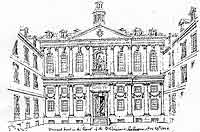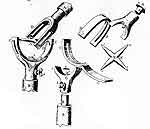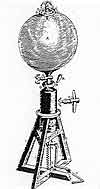 |
 |
 |
 |
 |
 |
 |
 |
 |
 |
 |
 |
 |
 |
 |
 |
 |
 |
 |
 |
 |
 |
 |
 |
 |
 |
 |
 |
Willen People
|
 |
 |
 |
 |
 |
 |
 |
Robert Hooke: 'An active, restless indefatigable genius'
|
 |
 |
 |
 |
Robert Hooke (1635-1703) was the architect of Willen church and has been called 'one of the most inventive geniuses the world has ever seen'. As a boy he enrolled at Westminster School where he mastered Euclid's six books of geometry in a week and invented 'thirty several ways of flying'. He lodged in the house of the headmaster, Dr. Busby, who became a life-long friend and later commissioned Willen Church. After the Restoration of Charles II in 1660 he became Curator of Experiments to the newly founded Royal Society, a post which he held until his death. He was the leading scientific figure of the period, with a mastery over a vast range of scientific fields. He wrote letters to scientists all over the world using four different languages.
|
 |
 |
 |
 |
 |
 |
 |
 |
 |
 |
 |
 |
 |
 |
 |
 |
 |
 |
 |
A list of his discoveries and inventions is impressive. He invented the air-pump which was the ancestor of the steam engine and internal combustion engine. Hooke was the first to observe that plants have a cellular structure. He gave the plant cell its name. Hooke discovered Hook's Law, concerning power in springs, and used it to develop a pocket watch using a balance-spring instead of a pendulum. He also invented the universal joint which is a key component of the modern car.
|
 |
 |
 |
 |
 |
 |
 |
 |
 |
 |
 |
 |
 |
 |
 |
 |
 |
 |
 |
 |
 |
 |
 |
 |
 |
 |
 |
 |
 |
 |
After the great Fire of London in 1666 he was appointed Surveyor for the City of London. As such he had to help plan and oversee the building of canals, bridges, quays and sewers. He also worked with Christopher Wren on designing many beautiful and prominent buildings. Willen church is one of only two buildings known to be all Hooke's work.
Hooke did some of the earliest experiments in skin grafting, blood transfusion and artificial respiration. He correctly predicted that lungs take something from the air in the act of breathing. He was awarded a doctorate for his services to medicine. |
 |







